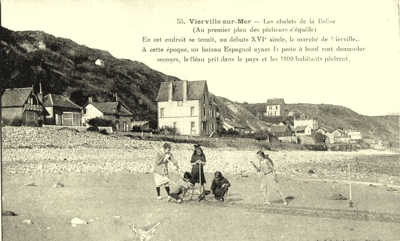Sign up for FlowVella
Sign up with FacebookAlready have an account? Sign in now
By registering you are agreeing to our
Terms of Service
Loading Flow

By the end of the 17th century Vierville had its own parish register which records several sailors, a rope maker and a sailmaker in the village.
The inhabitants were self-sufficient except in the supply of metal.
They grew flax for linen and treated it in the spring called "les routoirs". This seems to have been around halfway to Saint Laurent at the bottom of the cliff and was accessed by both a pebble path along the sea line and a path down the cliff from Hamel du Pretre.
That strip of land between the sea and the cliff was rather marshy and every August and September, people who had cider presses would come down and harvest 4 foot long reeds to make straw beds between layers of apples they were storing.
Sometime in the 17th century (likely before 1670) the port was destroyed in a storm and deemed too expensive to rebuild and keep up. There had been continuous problems with the basin entrance sanding up and getting blocked by the pebbles.
Flax cultivation was also abandoned, so the land was given over to pasture for sheep and cows. Apple farmers still collected the reeds at the end of summer.
THE END OF THE PORT

As you see from the inscription on this postcard, the cause for the demise of the port and village has often been attributed to the plague being introduced by a Spanish ship. This is not supported by historic evidence.